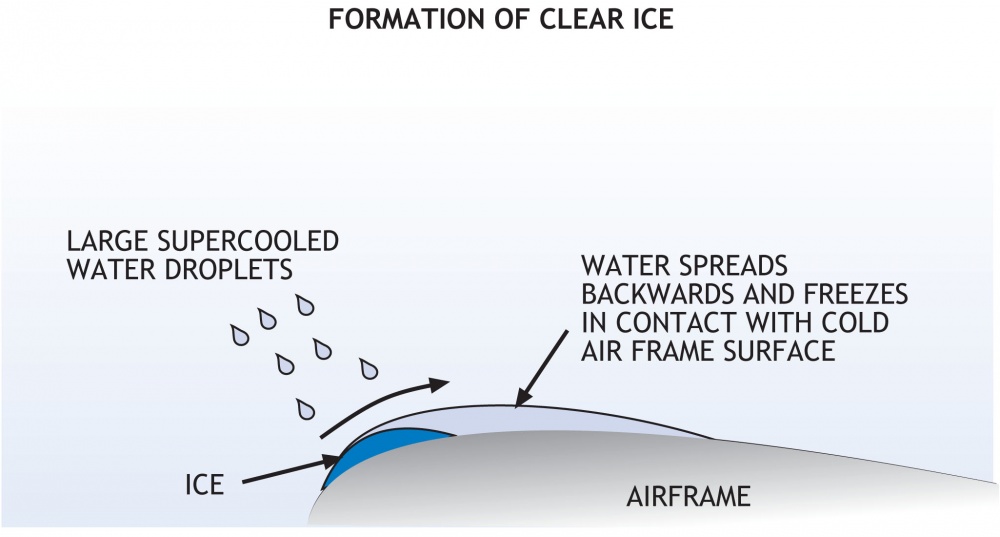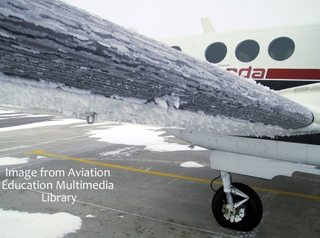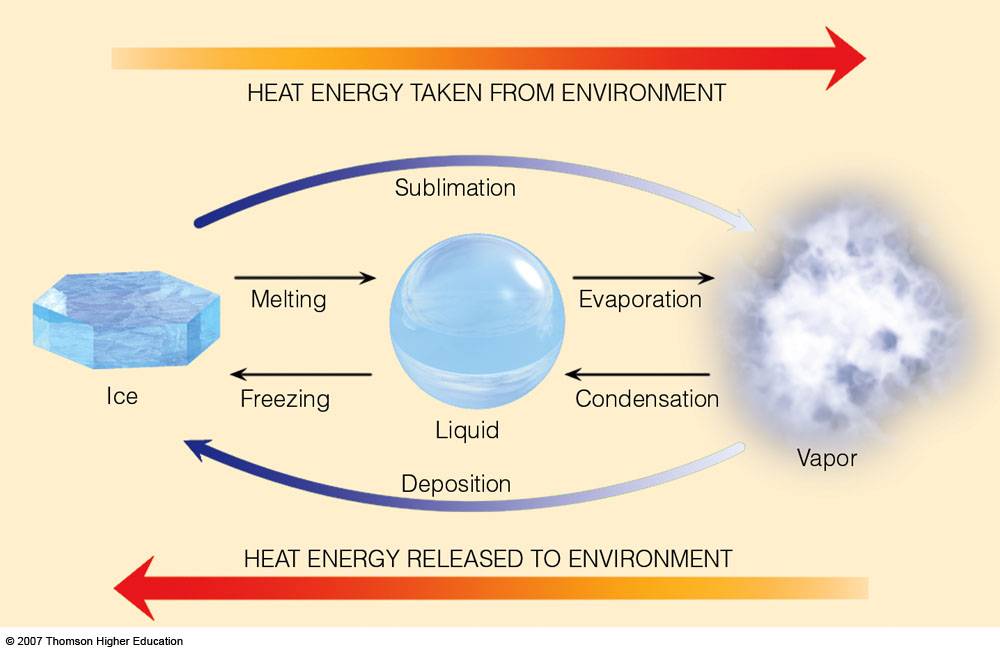Explain the environmental factors involved in carburettor icing, including;
a) moisture content;
b) temperature;
c) temperature gradient (inversions).
Carburettor icing occurs when cooling takes place as moist air passes through the carburettor venturi. The cooling is
partly due to the fall in pressure as the air accelerates through the venturi, and partly due to fuel evaporation, where
the latent heat of evaporation is taken from the surrounding air and metal. Combined, these two efects may lower
the temperature in the barrel by as much as 25 to 30 degrees Celsius.
The ice build-up adds to the venturi constriction and will increase the speed of the flow through the carburettor,
causing a further lowering of the pressure which in turn increases the cooling rate. Thus, carburettor ice feeds on
itself until the excessively rich mixture kills the engine (see figure 73).
(a) Moisture content;
The higher the moisture content of the air, the more likely it is that serious carburettor icing will form. This is because
the high water vapour content provides plenty of moisture to form ice.
(b) Temperature;
Clearly, if the temperature within the carburettor barrel is capable of being cooled by up to 30 deg C, the outside air
temperature (OAT) need not be close to, or below zero degrees Celsius for carburettor icing to occur. In fact, warmer
sub-tropical air can have a high water vapour content (temperature/dew point close together, 23/20 for example),
meaning carburettor icing is more likely to form at higher temperatures than at quite low temperatures where there is
limited water vapour available.
(c) Temperature gradient (inversions).
Inversions occur when warm, and often moist air overlies cold, relatively dry air. Therefore, flight immediately above
the inversion is more prone to icing than flight below it.
8.28.16 State the temperature range that carburettor ice typically forms in.
Carburettor icing can form over a wide range of temperatures, from -15C to +30C.
Explain the methods that can be used to manage the risks of aircraft icing.
Avoid icing conditions ie – flying in cloud or above the freezing level
Utilise carburrettor and pitot heat elements
Spraying anti-ice glycol before flight
State the dangers of icing to aircraft in flight and on the ground.
Aircraft in flight
Increase in drag , decrease in lift
Increase in weight, decrease in thrust
Increase in stall speed, need for longer runway
Blocking of pitot tube, static vent, fuel cap vent
Blocking of air intakes
Loss of aerial
Freezing of controls, flaps and retractable undercarriages
Aircraft on the ground
Increase in weight, need for longer runway
Blocking of pitot tube, static vent, fuel cap vent
Freezing of controls
Blocking of air intakes
Explain the influence of the following on the rate of ice accretion:
a) water content of cloud;
b) aircraft characteristics, components and airspeed.
a) Cloud Water Content
– the greater the water content in cloud, the greater the rate of Ice Accretion
b) Aircraft Characteristics
– sharp components gather ice more easily
– thin leading edges
– fins
– aerials
– propellor and helicopter blades
– The higher the speed at which the aircraft flies is associated with faster ice accumulation
– above 250 kts kinetic heating due to skin friction reduces the risks of icing
State the hazards for light aircraft from:
a) snow;
b) sleet;
c) hail.
a) Snow
– can increase the aircraft weight and therefore reduce lift, increase drag and increase the stall speed
– can lengthen the take off distance
– worse when it has settled on the aircraft on the ground prior to take off

b) Sleet
– sometimes referred to as ‘wet snow’
– can increase the likelihood of ice coverage over the aircraft including the windscreen affecting visibility
.jpeg)
c) Hail
– in a place where there are strong up and down draughts – such as in vigorous Cumulonimbus developments
– the more intense the up and down draughts the larger the size of the hailstones

Give examples of conditions that could cause:
a) freezing rain;
b) hoar frost.
a) Freezing Rain
– can occur in frontal and inversion situations
b) Hoar frost
– can occur when an aircraft is parked outside on a frosty night
State the altitudes relative to the freezing level where rime ice or clear ice can be expected in cloud.
Clear Ice
Altitude = 6-8,000 ft above the freezing level
Rime Ice
The first few thousand feet above the freezing level
State the types of cloud, and cloud drop size, that are conducive to the formation of each type of ice.
Clear Ice
– large cloud drop size , mostly found in Cumuliform cloud
Rime Ice
– small drop size associated with Stratiform clouds with little or no turbulence in them
With regard to airframe icing, explain the processes involved in the formation of:
a) clear ice;
b) rime ice;
c) hoar frost;
d) freezing rain.
a) Clear Ice
Clear ice is formed when relatively supercooled water drops at temperatures between zero degrees and about minus 15 degrees are struck by an aircraft
On impact a small part of each drop will freeze instantly but the remainder remains as liquid and flows back over the wing and fuselage – freezing progressively and squeezing out any air bubbles that may have formed
A solid layer of glass-like ice forms being difficult to dislodge.

b) Rime Ice
When the temperature of droplets is colder than minus 15 degrees the percentage of water flowing back and freezing progressively is much reduced because the greater portion of drops freezes instantly. When these drops are struck by a passing aircraft most of the supercooled water changes to ice and in doing so traps bubbles or air within the ice formation. This ice is a milk like character and of irregular shape
The irregular shape greatly upsets the aerodynamics of the wings and other components and lift is reduced and drag increased.
Higher stall speed and potential blocking of intakes

c) Hoar Ice
This type of ice is formed through the deposition process when water vapour turns directly to ice without going throught the liquid water stage. It may form when an aircraft parked overnight in frosty conditions water vapour touching on the aircraft skin will turn straight to ice
Can cause increased weight and drag, reduce lift and increase stall speed – Very dangerous

d) Freezing Rain
In frontal and inversion conditions, warm precipitation droplets can fall into a lower air layer which is colder than freezing – becoming super-cooled. An aircraft flying in such a layer can be covered ery quickly in layers of clear ice

Explain the processes of freezing and melting.
Freezing – liquid turns to solid – Latent heat released
Melting – solid turns to liquid – Latent heat required


.jpeg)





